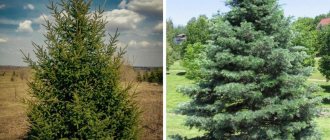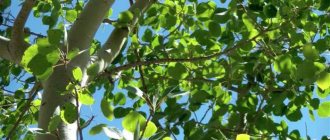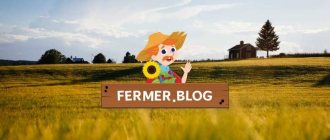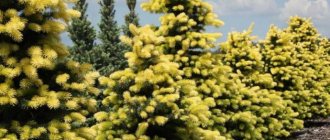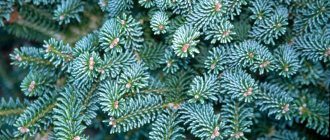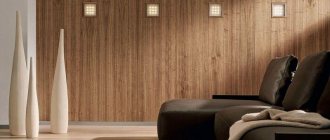image of Eli
Since childhood, at Christmas and New Year, people have become accustomed to smelling fir branches.
Mixing with the smell of tangerines, this fragrant pine aroma was a harbinger of a miracle, gifts, new experiences and the New Year. For many centuries, Spruce has personified the symbol of a new cycle. In ancient times, remaining evergreen, Spruce was an allegory of eternal youth and immortality, longevity and fidelity.
For the same reasons, the Spruce “spruce branches” were and remain in many villages a sign of a bygone life. During the funeral procession, “spruce branches” are thrown at the feet, saying goodbye to the departed. Their age has ended, but has passed into eternity.
In Scandinavia, spruce was used for ritual bonfires. The resinous firewood gave the fire unique strength.
Diseases and pests
Spruce trees, like other plants, can be susceptible to harmful insects and diseases. Trees that are weakened due to insufficient or improper care most often suffer.
| Problem | Description | Control measures |
| Rust | Cylindrical vesicles containing spores appear on the needles. Early shedding of needles occurs. Young plants are most often affected. | Spraying with fungicides, timely removal of weeds. |
| Schutte | The disease occurs in the spring. The needles on the shoots first change color and then die. Its fall occurs at the beginning of the next season. A fungus forms on the needles. | Elimination of infected shoots, treatment with fungicides. |
| Spider mites | The parasite becomes active during drought. Dots appear on the plant. Another characteristic feature is the cobweb. | Preventive spraying with acaricides. These include Floromite, Flumite, Apollo, Borneo. Insectoacaricides (Akarin, Agravertin, Actellik, Oberon) are used for treatment. |
| Bark beetles | The pest damages the bark, as evidenced by the large number of passages. | Treatment with the following drugs: Crona-Antip, Clipper, Bifenthrin. |
| False scale insects | The parasite is protected by a brown shell. The tips of the stems become bent and gradually die off. The needles acquire a brown tint. | Compliance with agricultural practices is the best prevention. To enhance the effect, plants are treated with insecticides. |
| Needle-eating leafrollers | Brownish-yellow caterpillars make rusty accumulations on shoots. | Using a solution prepared with green soap. |
| Sawflies | Insects settle on young trees. Their growth slows down, the stems lose their needles. | Digging up the soil, destroying nests. The larvae are treated with insecticides, which include Fury, BI-58, Decis. |
| Root sponge | The root system rots. Brown or brown formations appear in the root collar area. | Removing all affected areas, using fungicides. |
Where does Spruce grow?
Spruce forests are found throughout Russia. These are mostly dense, dense thickets with some undergrowth.
Despite the fact that Spruce develops best in an open area, its shade-tolerant counterparts are found.
The most common type of tree is “Normal Spruce”. It is found in the European part of Russia, Finland and northern Europe. Spruce groves are found in both Siberia and the Urals.
Brothers of the Norway Spruce can be found in the Caucasus and the Far East, on the Kuril Islands and Sakhalin. Even in North America and China, certain species of this thorny, fragrant tree grow.
Tallest Christmas tree in the world
In the world ranking of the height of Christmas trees, artificial trees come first. Green beauties of the size that people create from plastic and metal do not exist in nature. Some copies only resemble the original from a distance.
The tallest Christmas tree in the world was built in Mexico City in 2009. It rose 110 m on Pacio de la Reforma Avenue, which can be compared to a 40-story building. The diameter of the artificial tree was 35 m. Electric garlands with a total length of 800 thousand m were placed on a metal frame, on which 1.2 million light bulbs glowed. The structure is listed in the Guinness Book of Records as the tallest artificial Christmas tree in the world.
In 2007, in the Brazilian city of Rio de Janeiro, in the picturesque Lagoa Rodrigo de Freitas lagoon, a floating Christmas tree was built on a platform. It rose 85 meters above the water and shimmered with lights from 2 million light bulbs.
In 2022, Japan announced that the holiday tree installed in the city of Kobe is the tallest living Christmas tree on Earth. The New Year's symbol was the thuevik, which is part of the Cypress family. But judging by the data, the tallest living spruce in the world was in Russia, and the tallest growing one was in Belarus.
We recommend checking out Masks with avocado
What does El look like?
Spruce is a tall, stately tree with a straight, strong trunk and a dense crown. The branches are arranged in a pyramid and have spiny needles. The bark of Spruce is dense and covered with scales.
The height of Spruce can reach 30 meters, while the trunk volume of many species exceeds 1.5 meters
The average lifespan of a tree is 250 – 300 years. There are centenarians up to 600 years old.
After 10–15 years of life, the tree changes its root system, getting rid of the main root. That is why in the forest you can find these wind-fallen giants with their roots turned upside down.
Plant care
Spruce tree care
Coniferous woody plants are quite picky, and spruce is no exception. Caring for them comes down to watering, occasional fertilizing, pruning if necessary, pest and disease control, as well as shelter for the winter, which applies more to young plants and dwarf forms.
Watering
Young spruce trees , as well as dwarf forms with a small root system, especially need watering Watering is carried out gradually and deeply, trying to slowly saturate the soil with moisture. A layer of peat or crushed cones 5–6 cm thick, loosely sprinkled around the perimeter of the crown, will help retain moisture and have a positive effect on the development of mycorrhiza.
During dry periods, trees are watered at least twice a month, spending 15–50 liters per root, with a general regularity of 6–8 times per season. Drought-resistant adult plants are watered abundantly during prolonged drought, with a sufficient frequency of 3–5 waterings per season.
to wash dusty pine needles in the evening , this washes off all the dirt, including inside the crown, since dried crust can cause more harm than a thin layer of dry dust.
Feeding
Properly filling the pits and applying granular fertilizer to the soil surface will ensure lush development of plants. The use of fertilizers requires sufficient moisture; if it is not possible to water regularly, it is better to limit the application of fertilizers.
After two or three years, for more intensive development, the strengthened spruce trees begin to be fed, adding complex granular fertilizers Fertik or others in the spring. You can use the following composition by mixing:
- humus – 1–2 l (depending on the size of the tree);
- 25 g superphosphate;
- 10 g potassium salt.
The mixture is applied evenly around the perimeter of the crown and watered well.
Trimming
Spruce trees are distinguished by their original, persistent form, which clearly manifests itself depending on the variety. When grown naturally, the gardener is only required to maintain the desired appearance of the tree by removing unnatural-looking branches, such as green reversals on blue varieties. At the same time, in early spring it is important to carry out sanitary pruning, removing disease-affected, dry, broken branches.
Formative pruning is used to improve or change the shape inherent in a variety - this is how you get even columns, perfect balls or the most incredible shapes. Year after year, the miniature, exquisite form of bonsai is becoming more and more popular, but its creation requires a lot of knowledge and a special approach.
Hedges and borders made from varietal spruce trees look luxurious, although such planting material is quite expensive. Silver-blue walls with minimal pruning can be obtained from the gray spruce varieties Fat Albert or Hoopsii .
A more affordable material for hedges is species plants, for example, spruce , which is stable and tolerates pruning well.
In May, the next year after planting half-meter seedlings, young shoots are pruned, finishing green operations in the first ten days of June. Pruning stimulates vertical development, cutting the shoots by 1/3 in height, and the lateral branches shorter by 1/2–2/3 of the length.
This pruning promotes thickening and continues for 4–5 years. Later, when the crowns close together, a smooth side surface is maintained using scissors with long blades. The procedure is carried out in March, and then the growing growths are re-evened at the end of spring.
Pest and disease control
Diseases often affect young or old weakened trees. Unfavorable conditions, difficult wintering, and pest attacks can significantly undermine the defenses, and then outbreaks of fungal infections are inevitable.
Pests
A variety of aphids , in particular the Sitka spruce, multiply in abundance on young growths, sucking out the juices; numerous colonies of small green insects can lead to drying out of the branches. When aphids appear, three treatments with Inta-vir or Actellik are required with a weekly interval.
The long, brownish, voracious caterpillars of the nun butterfly completely eat up the needles and can completely destroy the trees. Spruce trees are treated with any available insecticide - Decis, Arrivo, Karate.
Colonies of Hermes spruce-fir are visible on the underside of the needles as whitish fluffy formations, sticky to the touch. The larvae develop in pink galls at the ends of the shoots and, when released, destroy young needles. Having noticed Hermes galls, the affected areas of the shoots are removed and, if necessary, treated with systemic insecticides - Confidor, Energy, Actellik.
The observation of rare cobwebs at the ends of the shoots, which is accompanied by yellowing and drying of the needles, indicates the dominance of spider mites . Treatments with sulfur preparations or Actellik are effective against the pest.
Young growths may look scorched not only when exposed to the spring sun, but also when attacked by spruce sawfly . To destroy the pest, they are treated with Karbofos and Decis.
Diseases
Schutte brown appears more often on young trees, in cramped and poorly ventilated nurseries, so it can be brought with planting material. The disease begins to develop rapidly during the first thaw, still under the snow covering the lower part of the crown. A brownish-gray coating is noticed on the needles, and later black dots are visible. The affected needles remain on the drying branches.
Severely affected branches are removed, fallen needles are burned, treated with one of the fungicides, Maxim and HOM work well. European spruce is affected by Schutte less often than other species.
Fusarium wilt usually affects trees in wetlands - the fungi penetrate from the soil through the roots and affect the vascular system, the branches gradually dry out, starting from the apical shoots. For prevention, the area is drained, the seedlings are soaked in fungicide solutions, and the soil is spilled with them. Maxim, Fitosporin-M, Fundazol are effective.
Spruce spinner or cone rust appears in the form of dark brown growths; cones infected with the fungus are open and do not fall off for several years. Seeds lose their viability, young shoots become bent. Since the main host of the fungus is bird cherry, it is planted further away.
Regular watering and fertilizing, placement in an open area, timely opening after wintering, treatment against pests, the use of stimulants - all these preventive measures will strengthen young conifers and prevent fungal diseases.
Medicinal properties of Spruce
Fir cones, pine needles and resin are used for medicinal purposes.
The needles contain bactericidal substances, amino acids, chlorophyll, vitamins and phytoncides. Spruce needles are rich in vitamin C, the concentration of which increases in winter, therefore, since ancient times, pine “tea” has been an excellent remedy for scurvy and at the same time strengthened the entire body.
Daily consumption of 3–4 spruce needles for a month can restore immunity and increase resistance to a number of viral diseases.
Several spruce branches placed in a vase in a room can kill harmful bacteria in the room, leaving a pleasant aroma in the air.
Fir cones are rich in tannins and essential oils. They also contain copper, manganese, aluminum, and iron.
Essential oils are used in the fight against acute respiratory infections and diseases of the upper respiratory tract.
Syrup from the buds of Spruce is prescribed for microinfarctions.
A decoction of pine needles is used by inhalation to treat sore throat and sinusitis.
Spruce resin or resin has antiseptic properties and can be used in ointments to heal wounds and ulcers.
Preparing for winter
Spruce trees are mostly frost-resistant and can withstand the harshest winters with temperatures dropping to -40°C. And yet, young trees must be covered in winter using spruce branches, dead wood, straw and reed mats that retain snow well. Vertically growing varieties should be tied to supports, since lush trees covered with snow can be uprooted in strong gusts of wind.
The soil in the tree trunk circles is well mulched with any available material - this will help retain snow, reduce soil blowing, and prevent exposure and freezing of the roots. During the winter, they try to collect more snow around the perimeter of the crown, which will not only protect the roots and lower branches, but also provide the needles with the missing moisture.
With the first warmth of spring, the snow is gradually removed, providing access to light and fresh air to the crown, then the layer of mulch is also reduced, raking it away from the root collar. Since the end of February, Christmas trees have been protected from spring burns by covering them with special nets, cotton fabric, spruce branches or other lightweight materials at hand.
Applications of Spruce
Spruce wood is the most common material for construction and fuel. The wood is also used to make paper.
Spruce wood is very soft and straight-grained. Despite its widespread use in construction, untreated wood is short-lived and quickly rots. That is why spruce wood is treated with antiseptics and mordants.
At the same time, Spruce wood is included in many modern materials, such as fiberboard, chipboard, laminated veneer lumber and others.
The musical properties of spruce wood have been noticed for a long time, so soundboards, bodies and other parts of musical instruments are made from this fragrant wood.
general information
In addition to all of the above, common spruce is quite widely used to create plantings along roads to protect against snow drift.
Many varieties have been developed that differ in the size and shape of the crown, as well as the color of the needles. This plant is the most widespread coniferous tree in Europe. It should be noted that the spruce is the official floral emblem of Medelpad, a Swedish province.
Norway spruce (described below) is a type species belonging to the genus of conifers of the Pine family.
